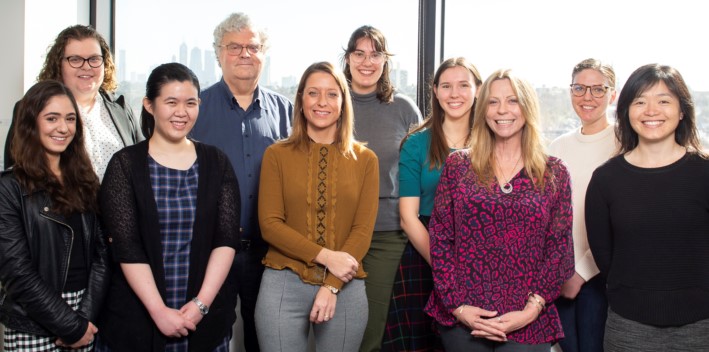This following excerpt was originally published on Monash University’s Clinical School Blog on September 9th, 2020.
For the first time, research has been able to display objective functional changes to the ocular motor networks in the brains of people with VSS. A recent study published in the journal Neurology has uncovered evidence of processing speed and error differences which can be measured with objective testing approaches.
Associate Professor Joanne Fielding from the Department of Neuroscience (Central Clinical School) led the study which used three different ocular motor tasks which placed different demands on the ocular motor network in the brain which controls eye movement. This study also allowed the team to determine at which stage visual processing was affected. Ms Emma Solly, PhD student, and Dr Meaghan Clough, a postdoctoral fellow in the Fielding / White research group worked with a group of patients diagnosed with VSS and compared their eye movements with another group of people with no health problems.
Senior author A/Prof Fielding said, “The ocular motor network and its processing of visual information is complex, involving a number of distinct steps that allow us to make sense of how we see the world.”
She said that the network includes areas of the brain involved in sending visual information from the eyes to the brain. It then puts together this visual information using cognitive processes to make a cohesive image, resulting in an eye movement.
“Our study provides the first evidence of objective and quantifiable behavioral changes in patients with visual snow syndrome.”
The team discovered that patients with VSS moved their eyes faster than healthy patients towards a suddenly appearing stimulus. In addition, when asked instead to stop that action and move their eyes in the opposite direction, VSS patients were more likely to erroneously move their eyes towards the stimuli.
Interestingly, when the difficulty of each of these tasks increased, therefore requiring increased demands on an individual’s higher order visual processing in the brain, the results were no different. The patients with VSS still responded with faster eye movements and the proportion of erroneous eye movements did not change.
A/Prof Fielding said, “These results suggest that in people with VSS the visual processing changes are not a consequence of disruption to decision-making centres of the brain. Rather, patients with VSS appear to be processing visual stimuli faster than healthy people, leading to hyper-accelerated eye movements.
“This analysis has provided an essential first step into defining a behavioural signature of VSS, and identifying the brain areas and processes affected.
“Once we know what’s causing the issue, that information can be used to develop targeted treatment and better management of this debilitating syndrome.”
For additional information on the type research the VSI is working on with the Ocular Motor Research group at Monash University, please visit their website to learn more or simply click here.


